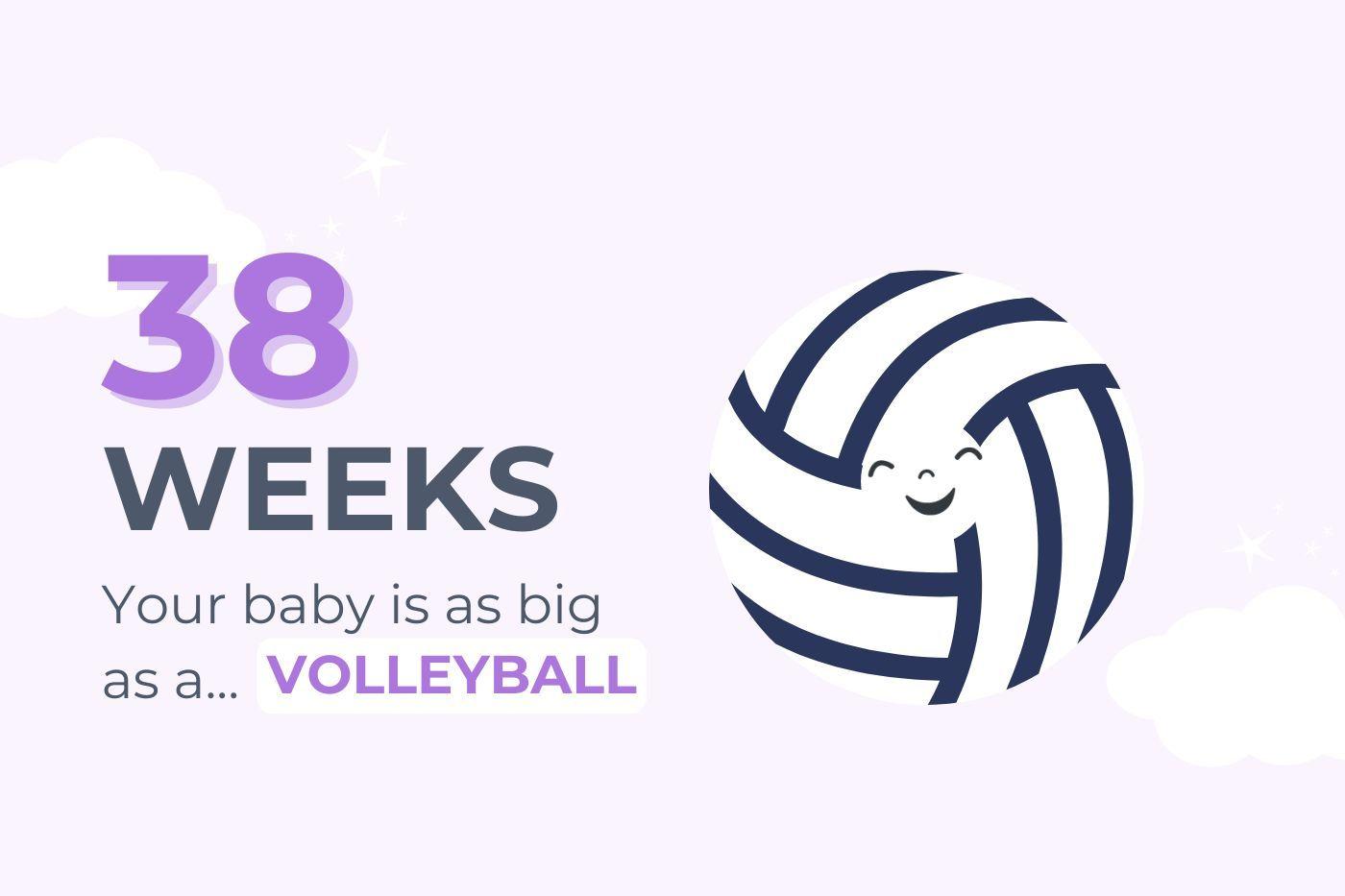PREGNANCY
38 Weeks Pregnant: Let’s Talk About Labour
Time to get prepared on what to expect during the 3 stages of labor!

Written by
Dr. Harvey Karp

SHARE THIS ARTICLE
PARENT PICKS
Bestsellers
PREGNANCY

Written by
Dr. Harvey Karp

SHARE THIS ARTICLE
Bestsellers
Just like you, your baby is getting ready for their grand entrance! At 38 weeks, your little one is considered “early term.” They’ll be officially “full term” at 39 weeks—so you’re almost there. Early term babies aren’t quite finished growing, but they’re very close.
Your baby weighs between 2.7 and 4 kilograms (6–9 pounds) and measures a little over 45 centimetres long. Their brain is primed and ready to help them adjust to the new world of bright lights, faces, sounds, smells, and touch.
This week, your baby’s liver completes its final development, and their lungs are preparing for that first big breath. At the moment, the air sacs are collapsed, but they’re coated with surfactant—a special substance that will help them stay open once your baby begins breathing.
The shock of the outside world—cool air, light, sound—will trigger their brain to switch on their breathing. Delaying cord clamping for 60 to 90 seconds after birth gives your baby an extra boost of blood, oxygen, iron, and stem cells.
Because babies have proportionally more exposed skin than adults, they lose heat quickly. To combat this, they’ve built up brown fat, which provides warmth in their first days. Skin-to-skin contact after birth also helps regulate their temperature, encourages bonding, and supports breastfeeding.
At 38 weeks, you’re about 8 months and 3 weeks pregnant—just a fortnight to go!
Your baby is about the size of a volleyball.
Your womb has grown from the size of a small pear (around 60 grams) to nearly 1.1 kilograms—and with baby pressing down, you may feel every bit of it. Walking may be slow and uncomfortable, while sitting or lying down might not bring much relief either. On top of that, your bladder is under constant pressure—so loo trips are frequent. Still, keep drinking plenty of water—it’s vital for you and baby.
As you approach labour, lean on your support network. If people offer help, say yes—you’re almost at the finish line!
Cramping is common at this stage, and usually a sign your body is preparing for birth. Causes include:
Call your midwife or doctor if:
FeatureBraxton HicksTrue LabourPain levelMild, uncomfortable tighteningBuilds from mild to strong over timeFrequencyIrregular, doesn’t get closer togetherRegular, gets closer togetherLocationUsually felt in the frontOften starts in the back, moves to the frontDurationVaries, short, no progression30–70 seconds, grows longer and strongerStops with rest?Yes—improves with hydration/movementNo—keeps going regardless of activity
Labour is divided into three stages:
Post-birth, shaking, stitches, and blood loss are all normal. Midwives or doctors will monitor you closely as your body begins recovery.
Most TV shows dramatise waters breaking with a gush, but in reality, it’s usually a trickle—and often happens during active labour. Rarely, babies are even born “en caul,” still inside the amniotic sac.
“There is a secret in our culture, and it’s not that birth is painful. It’s that women are strong.” — Laura Stavoe Harm
Disclaimer: The information on our site is NOT medical advice for any specific person or condition. It is only meant as general information. If you have any medical questions and concerns about your child or yourself, please contact your health provider. Breastmilk is the best source of nutrition for babies. It is important that, in preparation for and during breastfeeding, mothers eat a healthy, balanced diet. Combined breast- and bottle-feeding in the first weeks of life may reduce the supply of a mother's breastmilk and reversing the decision not to breastfeed is difficult. If you do decide to use infant formula, you should follow instructions carefully.